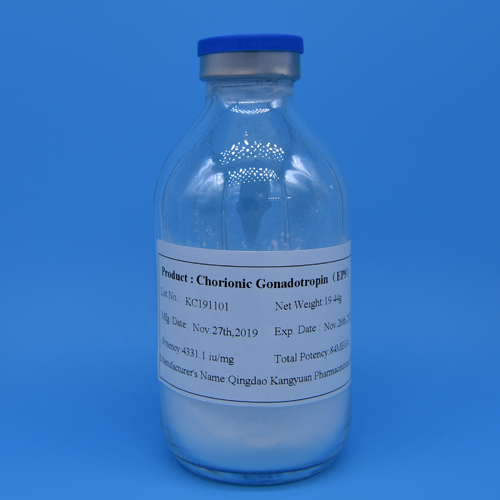Application of human menopausal gonadotropin
Gonadotropin derived from animal hypophysis has been widely used in animal
husbandry and aquaculture, but has no effect on human beings. HCG can be
prepared from the urine of pregnant women, or a mixture of LH and FSH, referred
to as human menopausal gonadotropin (HMG), can be used clinically for the
treatment of hyposexual function.

Mechanism of human menopausal gonadotropin secretion
The production and release of pituitary gonadotropin is directly regulated
by the hypothalamic luteinizing hormone-releasing hormone (LH-RH). LH and FSH
target gland products - sex hormones in turn can affect the pituitary or
hypothalamus secretion function. Therefore, THE secretion of LH-RH, LH and FSH
and sex hormones restrict each other and fluctuates quite rhythmically. The
repeated occurrence of the female menstrual cycle is the result of the
fluctuations and rhythmic changes in the secretion of this tertiary hormone.
Structure of human menopausal gonadotropins
Gonadotropin (LH, FSH, HCG) and thyroid stimulating hormone (TSH) are
composed of two peptide chains, and, which are combined by non-covalent bonds
and contain glycosyl groups, the glycosyl parts of which are covalentially bound
to individual asparagine, serine or threonine residues on the peptide chains.
The two peptide chains can be split and recombined. LH, FSH, HCG and TSH have
the same -peptide chain structure, while -peptide chain has its own
characteristics, which determines the functional specificity of the above
hormones.